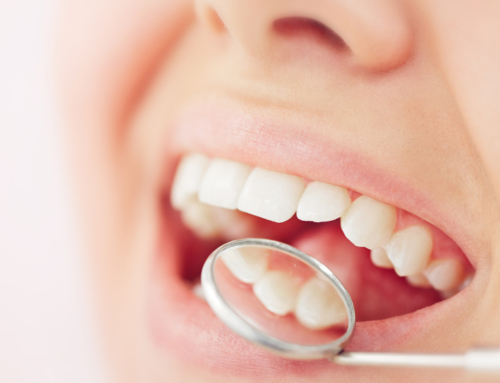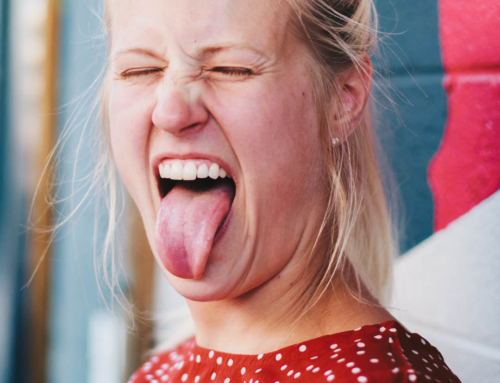Achieving a Bright White Smile with a Good Oral Hygiene Routine

If you are unhappy with the whiteness of your teeth, but you don’t want to take the plunge for teeth whitening treatments, there are some things you can do. When it comes to the color of your teeth, what you eat and how you treat your teeth can play a vital role. Unfortunately, genetics and age can too, and these factors can’t always be changed. The best place to start when it comes to keeping your teeth their brightest is a good oral hygiene routine. Other lifestyle changes and tips can also make a difference. Before we look at how to keep your teeth healthy and white, let’s take a closer look at your teeth and what can contribute to discoloration.
Understanding What Stains Your Teeth
Tooth discoloration comes in two different forms: extrinsic and intrinsic. Extrinsic stains occur from the outside and are commonly caused by what you eat and drink, as well as inadequate oral hygiene. These are the stains that whitening treatments and products typically address.
Intrinsic stains are a little more difficult to address as they come from the inside. Taking certain antibiotics as a child, or other medications for acne and high blood pressure, can affect the color of permanent teeth. For example, taking tetracycline as a child causes calcification of the adult teeth still forming under the gum. When the teeth erupt, they can show a yellow, gray or even a blue tone or stain.
Unfortunately, genetics can also play a role in tooth discoloration. While many people are born with bright, white teeth, others may be more yellow naturally. In addition, age contributes to dental discoloration. As you age, your enamel thins, causing a more yellowish appearance.
Start with a Good Oral Hygiene Routine

The key to bright teeth and healthy gums is good oral hygiene and dental care. From the time you were a child, no doubt you have been taught to brush your teeth at least twice a day. Brushing helps to remove food particles left behind, as well as dental plaque which is composed of bacteria that builds up on your teeth. Plaque buildup is a common cause of tooth discoloration, so regular brushing helps reduce plaque accumulation. Plaque can also contribute to tooth decay and gum disease, so in addition to keeping your smile bright, regular brushing also helps keep your teeth and gums healthy.
In addition to brushing, you should be flossing your teeth at least once a day. Flossing helps remove those food particles and bacteria that brushing alone can’t reach. If regular flossing is difficult for you, there are individual flossers that make it much easier to reach into those small spaces between your teeth.
Attend Regular Dental Checkups and Cleanings
While good oral hygiene is sufficient for daily care and keeping your teeth white and healthy, regular checkups with your dentist make sure your brushing is doing its job. Your dentist can detect tooth problems, such as decay, and troubled areas before they become a bigger problem. Your dentist might be able to detect problems that could be contributing to tooth discoloration and address them before they get worse.
Think back to the last time you had a dental cleaning and how bright your teeth looked and how smooth they felt. Regular cleanings are a great way to keep your teeth healthy and white. While a good oral hygiene routine is the best place to start, regular cleanings with a dental hygienist will not only boost the whiteness and brightness of your teeth, but they will also prevent gum disease and tooth loss. While daily brushing helps to remove simple surface stains, a dental cleaning goes deeper and removes stains your toothbrush can’t. Dental cleanings also remove that stubborn plaque that builds up and dulls the look of your teeth. This is also a time when your hygienist can alert the dentist to possible problems they may see, such as the early signs of tooth decay or gum disease, both of which will affect your smile.
Consider a Toothpaste with Baking Soda
While stores are packed with different toothpastes and mouthwashes promoting whitening qualities, they aren’t really whitening, or bleaching, your teeth. These toothpastes use abrasive cleaners to help you remove stains while you brush. Unfortunately, harsh abrasives can damage or wear down your tooth enamel, which can actually contribute to increased staining.
You may be familiar with baking soda and may have even seen toothpastes with baking soda in it. While baking soda helps your cupcakes rise, in toothpaste, it helps remove stains. Baking soda is a mild abrasive that aids in the removal of surface stains, making your teeth brighter.
A 2017 supplement to The Journal of the American Dental Association (JADA) put together a number of reports looking at the effects of baking soda in toothpaste used as part of an oral hygiene routine. They reported that the hardness of baking soda is relatively low and actually less than that of enamel, making it a soft abrasive safe for teeth. In addition, the properties in baking soda reduce the acidity of plaque fluid in the mouth, reducing the risk of tooth decay and promoting healthy teeth and gums.
But does baking soda really help reduce stains and give you brighter teeth? The answer, according to a 2012 study published in The Journal of Clinical Dentistry, is yes! This particular study looked at a baking soda toothpaste from Arm & Hammer. The study included 146 subjects, with half using the backing soda toothpaste and the others using a placebo. All participants brushed twice daily with their respective toothpastes for six weeks. Results showed that the group using the baking soda toothpaste experienced significant shade score reductions, or brighter teeth, while the control group showed no change.
Pay Attention to What You Consume

I have mentioned that what you eat contributes to the brightness and white color of your teeth. Regular consumption of dark liquids, such as coffee, tea, and red wine can have a significant impact on tooth discoloration. So can foods rich in color, such as blueberries, rich pasta sauce, or spicy curries. The color found in these foods and drinks originates from chromogens, or deeply pigmented molecules that attach to your tooth enamel, causing stains.
Now, this doesn’t mean you have to say goodbye to your daily coffee or your favorite food, but you might want to make some changes in how you eat, drink, and take care of your teeth. These few tips are things to consider when eating:
Say Goodbye to the Cigarettes
While you already know smoking is bad for your health, it also contributes to tooth discoloration as well as tooth loss. When it comes to your teeth, on the surface they look solid. In reality, your teeth have pores similar to your skin. When you smoke, the pores in your teeth absorb the tar and nicotine. And if you always smoke on one side of your mouth, you may notice that only the teeth on that side of your teeth are discolored.
Regarding dental health, smoking can cause your gums to recede and pull away from the teeth, exposing the tooth root and contributing to gum disease. Saying goodbye to cigarettes not only helps improve your general health, but it will improve your oral health and give you a brighter and whiter smile.
With good oral hygiene routine, regular dental visits, and a few lifestyle changes you can keep your teeth healthy and white, often without the need for at-home or in-office whitening treatments. Give these tips a try and see just how beautiful and bright your teeth can be naturally.






My teeth are becoming somewhat yellow so I needed this advice.